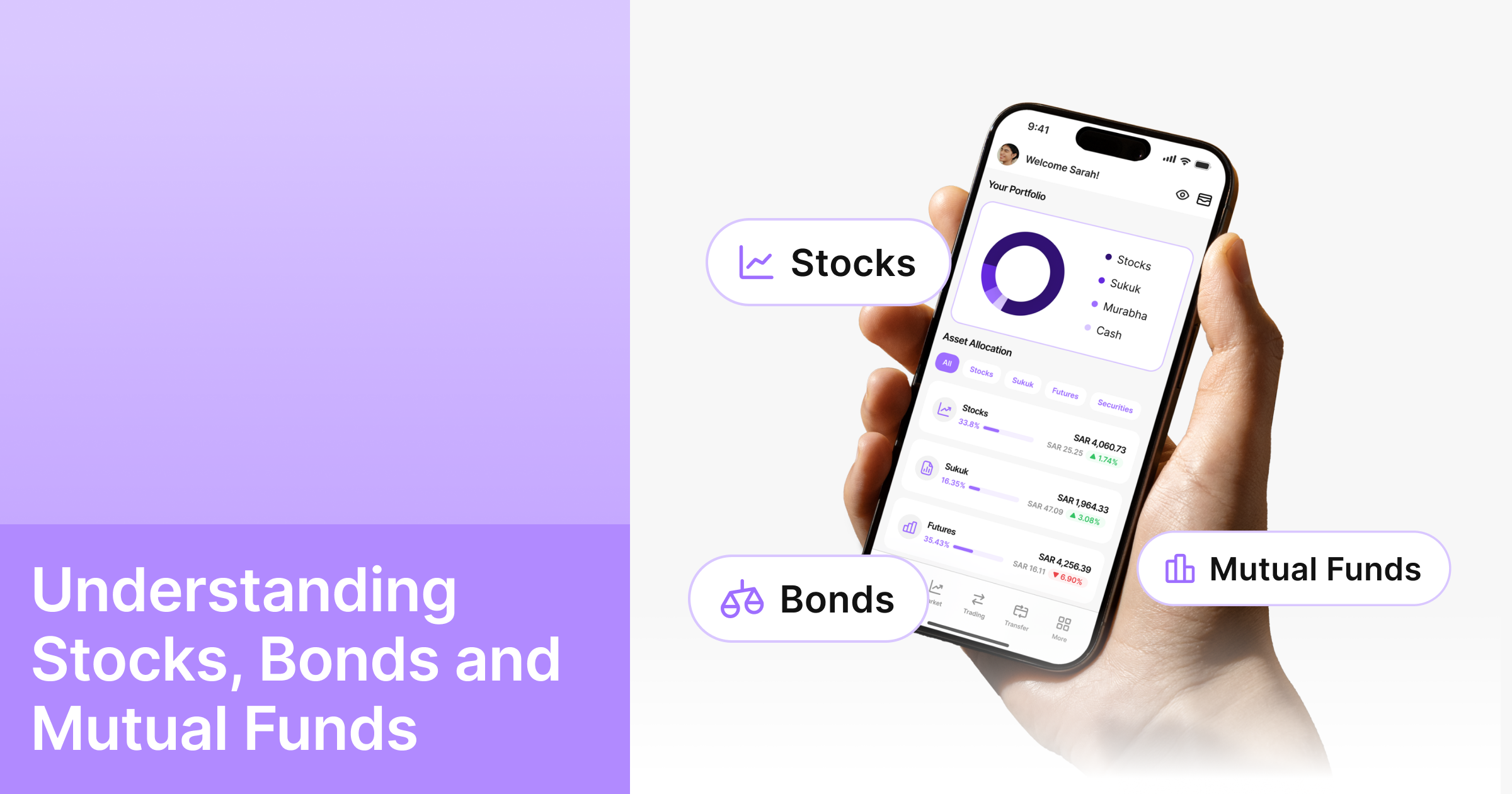The Beginner’s Guide to Investing in the Saudi Stock Market
The Saudi stock market, known as the “Tadawul,” is one of the largest and most active financial markets in the Gulf region. It has driven corporate sector governance and transparency while offering funding to publicly traded firms and fiscal regulation, which has substantially impacted Saudi Arabia’s economic development since its inception.
The market contains numerous domestic and national firms that operate across all sectors, thus making them suitable for economic development engagement in Saudi Arabia. Stock market participation serves as a common method for businesses to connect with national economic expansion and business expansion.
That said, it’s important to know that investing in stocks involves risks and is not a guaranteed path to financial gain. Several unforeseen events, including local or global economic conditions, oil price changes, implementation of policy decisions, geopolitical events, or natural disasters, may also impact the stock market’s performance and/or any return on investment. Therefore, it is always necessary to ensure a careful and informed decision-making process beforehand for any of these investments.
Key Features of the Saudi Stock Market
Understanding the basic structure of Tadawul can be helpful, especially for those just getting started:
- Listed Companies & Trading Volume: The market hosts over 200 companies from different sectors and sizes. Daily trading volumes often reach several billion SAR, indicating generally high liquidity.
- Sectoral Diversity: Companies operate across industries such as energy, manufacturing, banking, telecommunications, healthcare, and logistics.
- Regulatory Oversight: The Capital Market Authority enforces strict disclosure rules to ensure transparency and provide investors with access to reliable financial data.
- Emerging Technologies: In recent years, tech startups have gained a foothold in the market, aligning with the country’s broader goals for digital transformation and sustainable growth.
Major Sectors at a Glance
- Energy: A core sector, including companies involved in petrochemicals, oil, and gas.
- Banking & Finance: Includes commercial and investment banks, insurance providers, and financial service institutions.
- Technology: A growing area supported by national investments in digital infrastructure and innovation.
This diversity introduces a variety of opportunities and challenges, making it important to study each sector in depth before investing.
How to Open an Investment Account
Accessing the Saudi stock market requires following a few essential steps:
1. Choosing a Licensed Brokerage
Make sure that the Capital Market Authority licenses the brokerage firm and has clean investor protection policies.
2. Submitting Required Documents
Generally, this would comprise a valid national identification document, an authenticated bank account number, residential verification, and updated contact details. A few companies will also demand a know your customer form.
3. Signing Agreements
The terms and conditions between the investor and the brokerage are spelled out in a legal contract.
4. Activating and Funding the Account
After the account is opened, it should be activated, which is usually done through a bank transfer or a direct deposit.
5. Using Trading Platforms
Most brokerages even provide mobile apps or web-based services that allow investors to see financial information, monitor markets, and manage portfolios in real-time. It is important to look at the rules, fees on the platform, withdrawal conditions, and the time when the platform is open.
Investment Strategies for Beginners
There’s no single investment strategy that works for everyone. Choosing the right one depends on personal goals, time horizon, and risk tolerance. Some common approaches include:
Long-Term Hold Strategy
This will be done by finding good companies, then buying their share and holding their stocks in the long term. The scheme might be appropriate to individuals interested in a slow and steady accumulation of wealth as opposed to fast profits.
Value Investing
This approach seeks to identify the stocks that look under-priced following financial measures. The strategy will be to make profits when the stock price has reached its perceived intrinsic value.
Dividend Investing
Those investors who value the stability of cash flows, in investments like Rogers (retirees), might target companies that are characterized by regular payments of dividends.
Sectoral and Geographic Diversification
Spreading an investment portfolio across various sectors or even countries can help mitigate risks associated with specific markets.
Technical and Fundamental Analysis: How to Evaluate Companies Before Investing?
“Analyze before investing” is a common principle. Proper use of analytical tools is essential for informed decision-making.
H3: Fundamental Analysis
This method assesses the solvency of a business based on such indicators as earnings, equity cash flow, leverage, and revenue expansion.
Key Factors:
- Projected future growth
- Management effectiveness and competitive position
- Profitability and debt ratios
- Dividend history
- Quarterly and annual reports
Technical Analysis
Deals with charts and market patterns, relying on such tools as moving averages, support/resistance levels, and volumes. It has been used to determine short-term movements in the market.
Combining both fundamental and technical analyses provides a broader perspective on a stock’s potential performance.
Common Risks in the Saudi Stock Market
Investing in the stock market carries inherent risks, including:
Market Volatility
Price fluctuations can occur suddenly due to global or local events, even rumors. Long-term investors may be better positioned to absorb these shifts.
Liquidity Risk
Some stocks, particularly from smaller or less active companies, may be harder to sell quickly without taking a financial hit.
Company-Specific Risks
Changes in leadership, poor earnings performance, legal issues, or new competitors can impact a company’s stock value.
Broader Market Risks
These include changes in interest rates, economic policies, geopolitical developments, and natural disasters.
Being aware of these factors can help investors manage expectations and avoid impulsive decisions.
The Role of Diversification in Risk Management
Diversification is often considered a practical method for managing risk.
Smart Diversification Tips:
- Avoid concentrating all investments in a single sector.
- Mix companies of different sizes and market capitalizations.
- Consider using a blend of investment vehicles, such as mutual funds or bonds, in addition to individual stocks.
It’s also important to periodically review and adjust your portfolio in response to market developments.
Ongoing Learning and Market Monitoring
Because markets evolve, continuous learning is crucial. Here are some ways beginners can stay informed:
- Follow Market News
Keep up with financial news, announcements from the Capital Market Authority, and company updates that may affect stock prices. - Read Reports and Analyses
Trading platforms and financial websites often publish market analysis and company performance reviews that can offer valuable insights—just be cautious about distinguishing between opinion and fact. - Build Investment Knowledge
Strengthening investment literacy can be achieved through reading books, enrolling in classes, and attending workshops. As long as one keeps an open mind, conversing with seasoned investors in the community can also be helpful.
- Use Portfolio Management Tools
Most platforms offer portfolio trackers and alert systems. Regular reviews of portfolio performance can help investors make timely adjustments.
- Learn from Experience
Mistakes are part of the learning process. Reviewing past decisions and their outcomes can provide important lessons for future investments.
- Manage Emotions
Emotional investing—driven by panic or greed—can lead to poor decisions. Staying rational and focused on long-term goals is key.
- Avoid Borrowing to Invest
Using loans to invest in stocks can increase financial risk. If stock prices fall, the investor may face losses that exceed their ability to repay.
Final Thoughts: Building a Balanced Portfolio
For beginners, developing a successful investment portfolio in the Saudi stock market is a long-term goal that requires planning, research, and risk management.
Key steps include:
- Setting clear investment goals—whether for long-term growth, retirement savings, or income generation.
- Choosing a strategy that aligns with personal circumstances and updating it as needed.
- Diversifying across sectors and company sizes to reduce risk.
- Reviewing performance regularly and learning from market shifts.
- Staying committed despite fluctuations and continuing to build investment knowledge over time.
The first thing to understand is that there are no assurances in the stock market, regardless of whether an investor is ambitious or hands-on, risking several hundred thousand dollars of hard-earned money.
Time, discipline, study, cost-benefit analysis, patience for the market to work itself out, and evaluation of certain carefully considered risks and possibilities are usually necessary for success. Since each investment decision has its own set of ramifications and obligations, most are neither isolated nor stand-alone proposals.
Therefore, one should thoroughly consider all of the choices before making any investment selections. Equally important is keeping up to date and only seeking official, trustworthy information regarding market developments and regulatory changes.
By using this strategy, a beginner can work toward creating a well-balanced portfolio and progressively create a position in the Saudi stock market. Over time, this may offer some protection against anticipated and unexpected dangers, as well as aid in laying the groundwork for long-term financial success.
Disclaimer: All information provided is for educational and awareness purposes only and does not constitute a recommendation or invitation to make any investment decision. Past performance is not indicative of future results. Please consult your financial advisor before making any decisions.
Derayah Financial is licensed by the Capital Market Authority under License No. 27-08109 dated 19/06/1429 H (23 June 2008).


